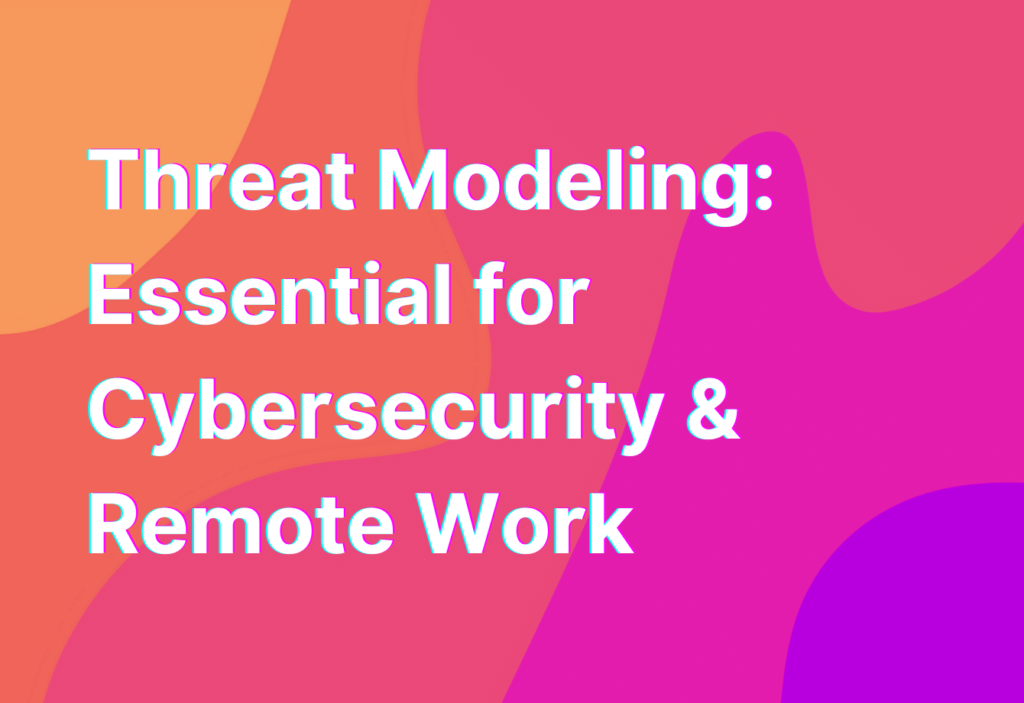Threat Modeling: Essential for Cybersecurity & Remote Work
Hey there, remote work enthusiasts! It’s Ashley here, your friendly neighborhood remote work advocate. Today, I want to talk about a crucial aspect of cybersecurity in the remote work world: threat modeling. Now, I know what you’re thinking – “Threat modeling? That sounds intense!” But fear not, my friends, because I’m here to break it down for you in a way that’s informative, engaging, and maybe even a little bit funny. So grab your favorite cup of coffee (or tea, if that’s your thing) and let’s dive in!
What is Threat Modeling?
Before we get into the nitty-gritty details, let’s start with the basics. Threat modeling is a process that helps identify potential threats and vulnerabilities in a system or application. It’s like playing detective, but instead of solving crimes, we’re uncovering potential cybersecurity risks. By understanding these risks, we can take proactive measures to mitigate them and keep our remote work environments safe and secure.
Now, you might be wondering, “Why is threat modeling important for remote work?” Well, my friend, the answer is simple. Remote work brings its own set of unique challenges when it comes to cybersecurity. With employees accessing company resources from various locations and devices, the potential for security breaches increases. Threat modeling allows us to anticipate these risks and implement appropriate security measures.
How Does Threat Modeling Work?
Threat modeling involves a systematic approach to identifying and analyzing potential threats. There are several different methodologies and frameworks out there, but I’ll give you a high-level overview of the process:
- Identify the assets: The first step is to identify the valuable assets within your remote work environment. This could include sensitive data, intellectual property, or even your favorite cat GIF collection.
- Identify the threats: Once you know what you’re protecting, it’s time to identify the potential threats. This could be anything from malware and phishing attacks to physical theft of devices.
- Analyze the vulnerabilities: Next, you’ll want to assess the vulnerabilities in your system or application. This could include outdated software, weak passwords, or lack of encryption.
- Rate the risks: After identifying the threats and vulnerabilities, it’s time to prioritize them based on their potential impact and likelihood. This helps you focus your efforts on the most critical areas.
- Implement countermeasures: Finally, you’ll want to implement countermeasures to mitigate the identified risks. This could include things like regular software updates, employee training on cybersecurity best practices, or implementing multi-factor authentication.
By following this process, you can create a comprehensive security strategy that addresses the unique challenges of remote work.
Why is Threat Modeling Important for Remote Work?
Now that we understand what threat modeling is and how it works, let’s talk about why it’s so important for remote work. As I mentioned earlier, remote work introduces new cybersecurity risks that traditional office environments may not face. Here are a few reasons why threat modeling is essential for remote work:
- Increased attack surface: With employees accessing company resources from various locations and devices, the attack surface expands. Threat modeling helps identify potential vulnerabilities and allows you to implement appropriate security measures.
- Protecting sensitive data: Remote work often involves the transmission and storage of sensitive data. By threat modeling, you can identify potential risks to this data and implement measures to protect it.
- Compliance requirements: Many industries have specific compliance requirements when it comes to data security. Threat modeling helps ensure that your remote work environment meets these requirements and avoids costly penalties.
- Employee awareness: Threat modeling is not just about technology; it’s also about educating employees on cybersecurity best practices. By involving employees in the threat modeling process, you can increase their awareness and help create a culture of security.
So, my fellow remote work enthusiasts, don’t underestimate the importance of threat modeling in the world of remote work. It’s a crucial step in ensuring the security and success of your remote work environment.
Wrapping Up
Well, folks, we’ve reached the end of our journey through the world of threat modeling. I hope you’ve learned a thing or two about this essential aspect of cybersecurity in remote work. Remember, threat modeling is all about identifying potential risks and taking proactive measures to mitigate them. By understanding the unique challenges of remote work and implementing appropriate security measures, we can create a safe and secure remote work environment.
Before I sign off, I want to leave you with one last resource to explore. If you’re interested in learning more about user behavior analytics and its role in cybersecurity for remote work, check out this User behavior analytics article on our website. It’s a fascinating topic that can further enhance your understanding of remote work security.
That’s all for now, folks! Stay safe, stay secure, and keep embracing the remote work revolution. Until next time!


